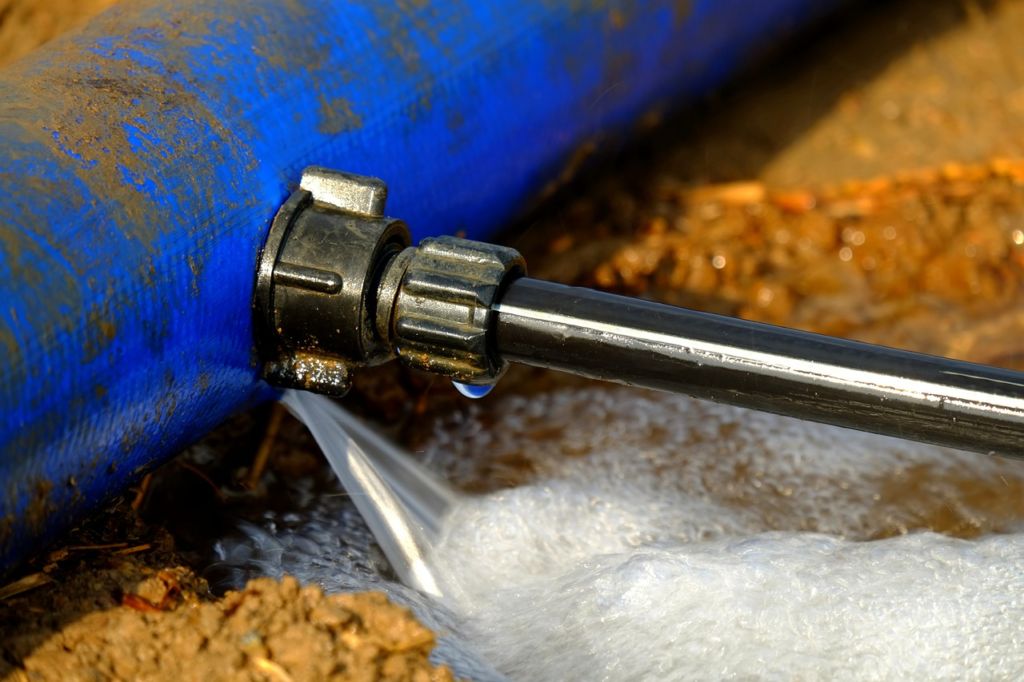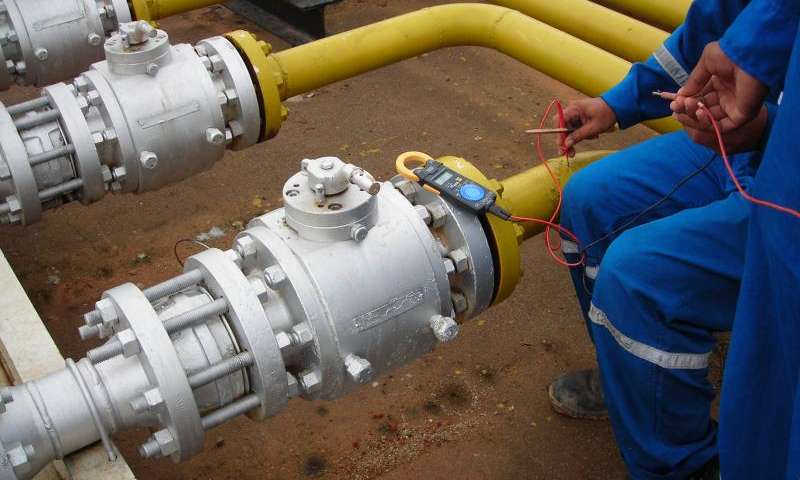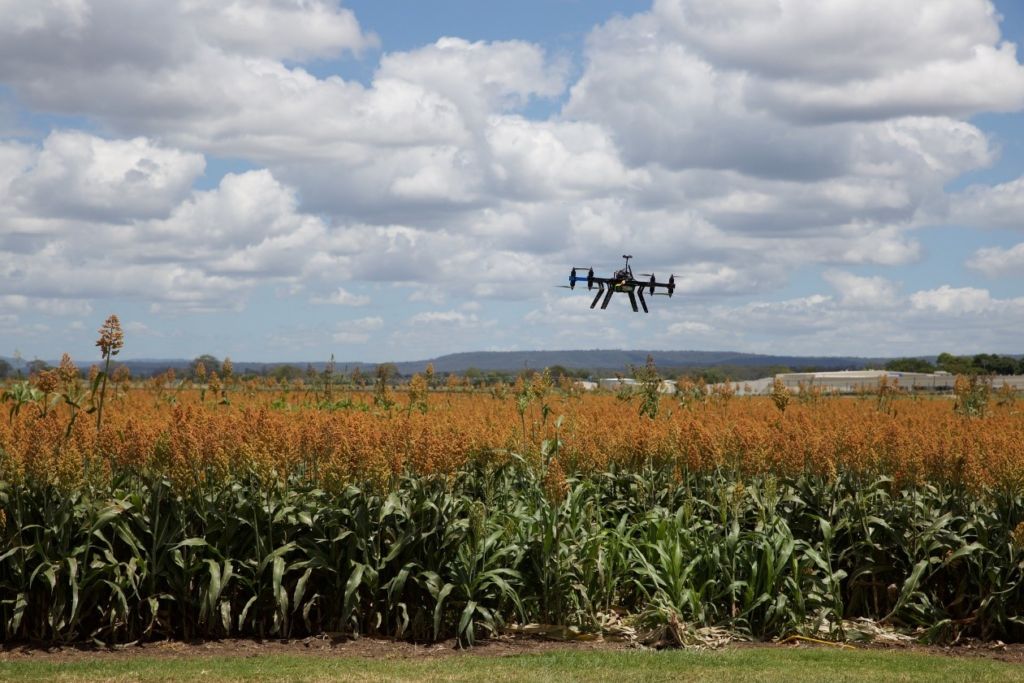
Pipelines in the United States are growing old and people aren’t replacing them quick enough. Bursts, like the one pictured above, cause over 2 trillion wasted gallons of water each year. Water optimization is getting help from optics and photonics devices to limit water loss in the pipeline.
Optical technology has had a huge impact on our everyday lives. Sensational inventions like the self-driving car, Wi-Fi connected home appliances and automated assembly lines all use optical fibers or sensors in some way. These technologies make for catchy headlines but will take years to make a widespread difference in people’s daily lives.
However, less glamorous but essential parts of human life are utilizing optics for concrete, tangible advances. Water optimization has been revolutionized by fiber optics, specifically to monitor pipeline health and water quality. Regions across the globe have deteriorating, wasteful or inefficient water infrastructure and need these innovations.
As mentioned before, water infrastructure in the U.S. is aging. Deteriorating lead and copper pipes are adversely affecting water quality. As a result, American companies are at the forefront in water optimization, developing pipe monitoring systems to detect abnormal activity. This includes increases in pressure, changes in water flow, or changes in the water’s chemical composition.
When new pipelines are needed, engineers will have an opportunity to install these preventative systems to reduce water losses. Here we explore three optical technologies that are changing the way people distribute water, both in cities and on farms.
Fiber optics to transmit pipeline pressure data
Developing countries with poor water infrastructure stand to benefit the most from developments in water optimization. Nations in Africa, Latin America and Southeast Asia suffer from severe water scarcity from environmental factors, and infrastructure problems like water loss.
Mexico has been at the forefront of using fiber optics in one of their largest new pipeline projects. Acoustic fiber optic sensors like those used in the Cutzamala Pipeline are a step towards optimizing water distribution. Fiber optic cables are composed of small glass “fibers” which are reflective, and can transmit information quickly. Light based signals carry the information by reflecting it through the cable to another device. In this case, acoustic sensors track abnormalities while signals can quickly be sent to the monitoring system via fiber optics.

Pictured above is one of many types of software used in water optimization to detect leaks and bursts. The algorithm analyses pressure data relayed through fiber optic sensors in the pipeline. Picture courtesy of phys.org
At one point in time, roughly 40% of water processed and pumped to Mexico City was being lost to pipe bursts and leaks. They were in dire need of structural improvements in water optimization to limit this excessive water loss. Existing trade relationships and technology transfer programs through NAFTA were a help in making this happen.
Right now, fiber optic sensors are widely used in gas and oil pipelines, but publicly funded water systems rarely get the same investment or attention as these industries.
Most countries lack the resources to install time consuming and expensive fiber optics on every water system. As sensors become portable, smaller and cheaper opportunities will open up for more countries to use these technologies in water optimization, and limit loss.
Spectroscopy to assess water optimization
Growing water scarcity plagues cities like Lagos, Kuala Lumpur, Delhi, and regions throughout China. In these areas, excessive pollution contributes to just as much of scarcity as failing infrastructure.
Optical spectroscopy is used more and more to test the contents of water, since they can analyze complex substances. The variety of chemicals that are found in water will respond to different forms of light. Spectroscopy is the use of the light spectrum to identify a substances chemical makeup, based on these responses to light.
Researchers use the spectrometer to search water samples for abnormal or harmful levels of certain chemicals. Spectrometers for wide array water analyses can cost over $20,000. However, open source tools exist to develop spectrometry algorithms. Fluorescence and vibrational spectroscopy have both been published and generate widespread industry attention.
They are attractive since they can be used in water optimization systems to analyze water quality while it is still in the pipeline. Easy access to spectrometry tests will have profound effects on public health from low water quality. Spectrometry is vital in determining water quality in residential areas, but also has huge implications for testing water and soil in agricultural businesses.
LiDAR in surveying large plots of land for agricultural challenges

Caption: Drones are used for farm operations like spreading pesticide or measuring crop height. These can be fitted with portable LiDAR scanners to image different aspects of the crop. Image courtesy of Pixabay.
One of the fastest developing photonics tools is the LiDAR scanner. LiDAR stands for light detection and ranging, and uses a laser that fires in quick pulses. The light pulses are shot at the target, reflected, and their return time is used to create a 3D model of the target.
LiDAR is having a gold rush of innovation due to growth in industries like defense, manufacturing and automated vehicles. Each industry wants the same: a cheap, portable LiDAR scanner. Portable LiDARs could be used in automated tractors or drones to collect data about the crop and the surrounding environment.
A previous article on FindLight’s blog covered LiDAR’s use in environmental monitoring. The post showed how LiDAR is used to find overabundant species and other environmental data. In practice, these same principles can be used to survey land for crop viability, water wells, pest or other wildlife and other variables. LiDAR techniques, in combination with advanced water distribution systems could minimize water loss. In combination with spectrometry techniques they can detect fertilizers, crop illnesses, pest infestations in crops or livestock, soil contents and pesticide levels to maximize crop yield.
Conclusion
Soon, farmers and water technicians will have access to full sets of data, which will drastically reduce the time it takes to identify problems or trends. U.S. farms and pipeline systems will test the efficacy of these new techniques in water optimization. Once the technology is proven to be reliable, it can boost agricultural production worldwide. The entire farming process could eventually be automated from seed to harvest.
Infrastructure and agriculture may not be in the apex of futuristic tech journalism, but they are permanent fixtures in the global economy. These represent some of the most tangible and immediate applications for advances in LiDAR, spectrometry and fiber optic monitoring.
